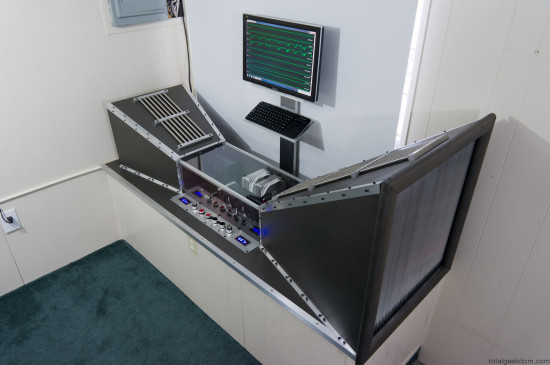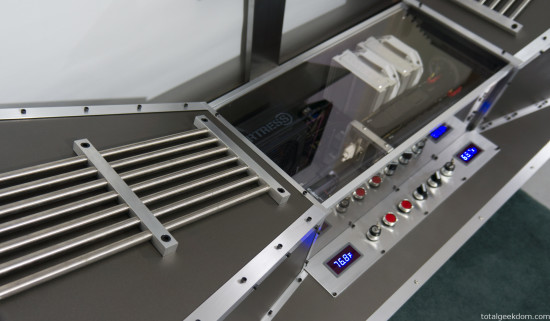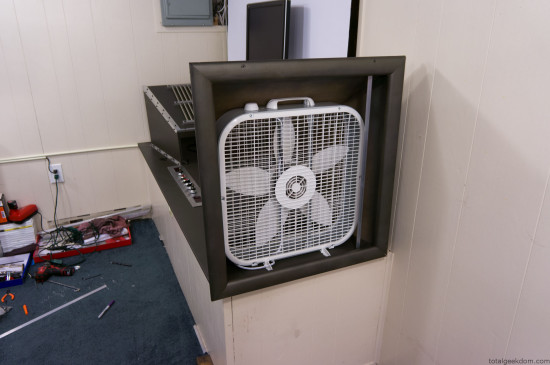While many of probably know Mike Schropp as the author of the Lego Folding Farm modding project, he isn’t only an enthusiast of distributed computing, but also PC modding. Considering this, it’s shouldn’t be a surprise that he chose to take the DIY route when he needed an enclosure for his new system. Mike decided to make a case, the idea for which was on his mind for quite a long time: a PC enclosure that is designed to look like a wind tunnel. Since Mike uses simple names for his modding projects that explain their nature, the new system was named simply a Wind Tunnel Computer. The main idea behind this modding project is to use a large fan to cool all of the systems’s components by blowing one unified stream of air through the whole system. The air ducts in this enclosure are made from MDF wood board composite and are decorated with aluminum, while the main section of the enclosure, which houses all of the hardware components, has translucent panels that are made from polycarbonate.
One of the reasons for having translucent panels in the enclosure, aside from their cool look, are aerodynamic tests of the hardware, that were conducted by Mike. These tests were conducted by using special smoke sticks, that are usually used to test HVAC systems. As to the performance of such a cooling system, Mike was more than satisfied with it: an overclocked CPU (Intel Ivy Bridge 3770k working at 4.5 GHz) and two graphic cards (AMD Radeon HD 7970) are kept in fairly cool conditions, which shouldn’t be surprising given the performance of the main fan, which measures up to 2040 m³/h and draws 96 Wt of power. And while the cooling performance is already good, Mike plans to increase its efficiency by removing the integrated heat spreader (IHS) from the CPU.
You can see the basic view of this custom modding project in the embedded photos, but if you are interested in Mike’s work, than you can get more details about it in a corresponding post on his website.
Source: Total Geekdom


